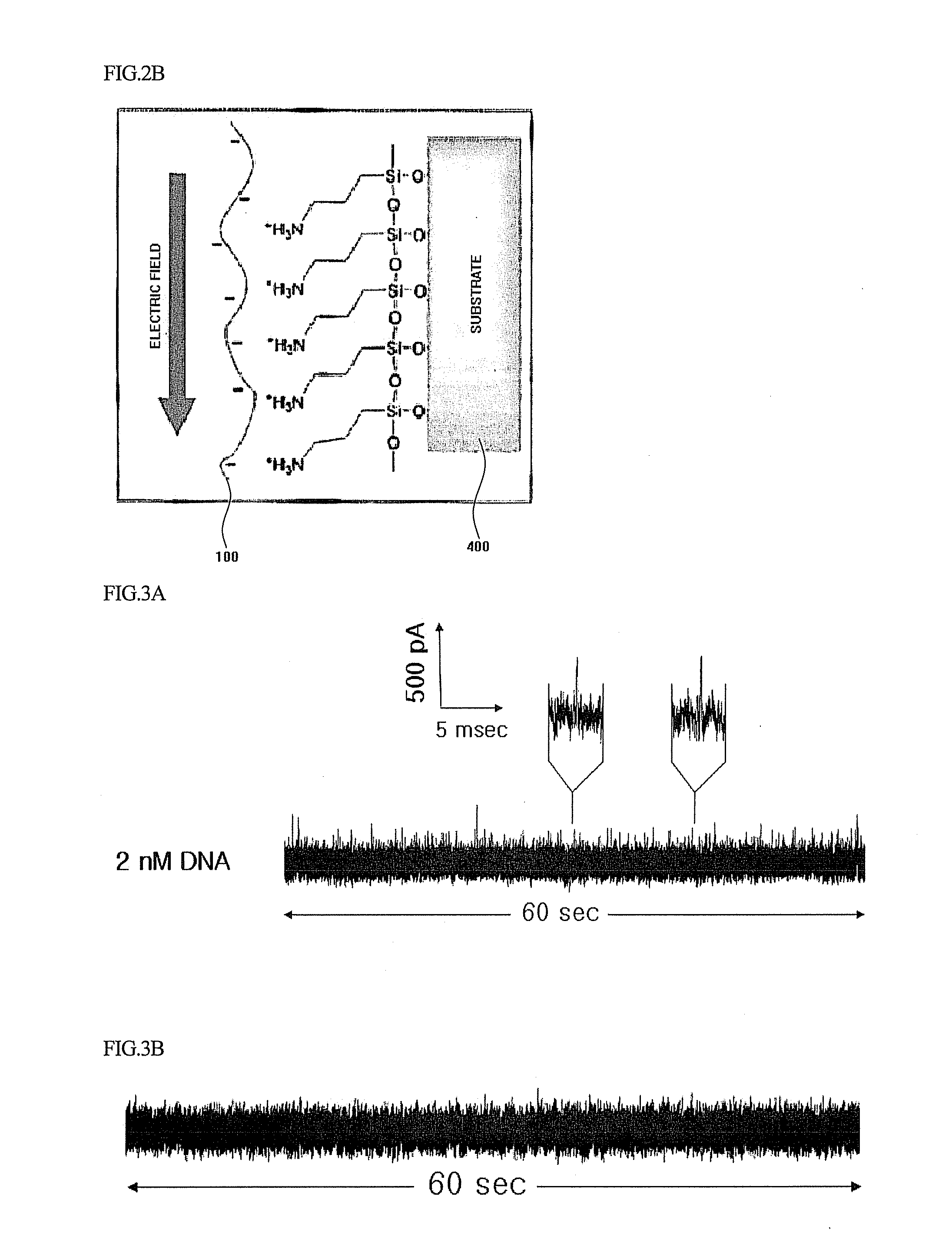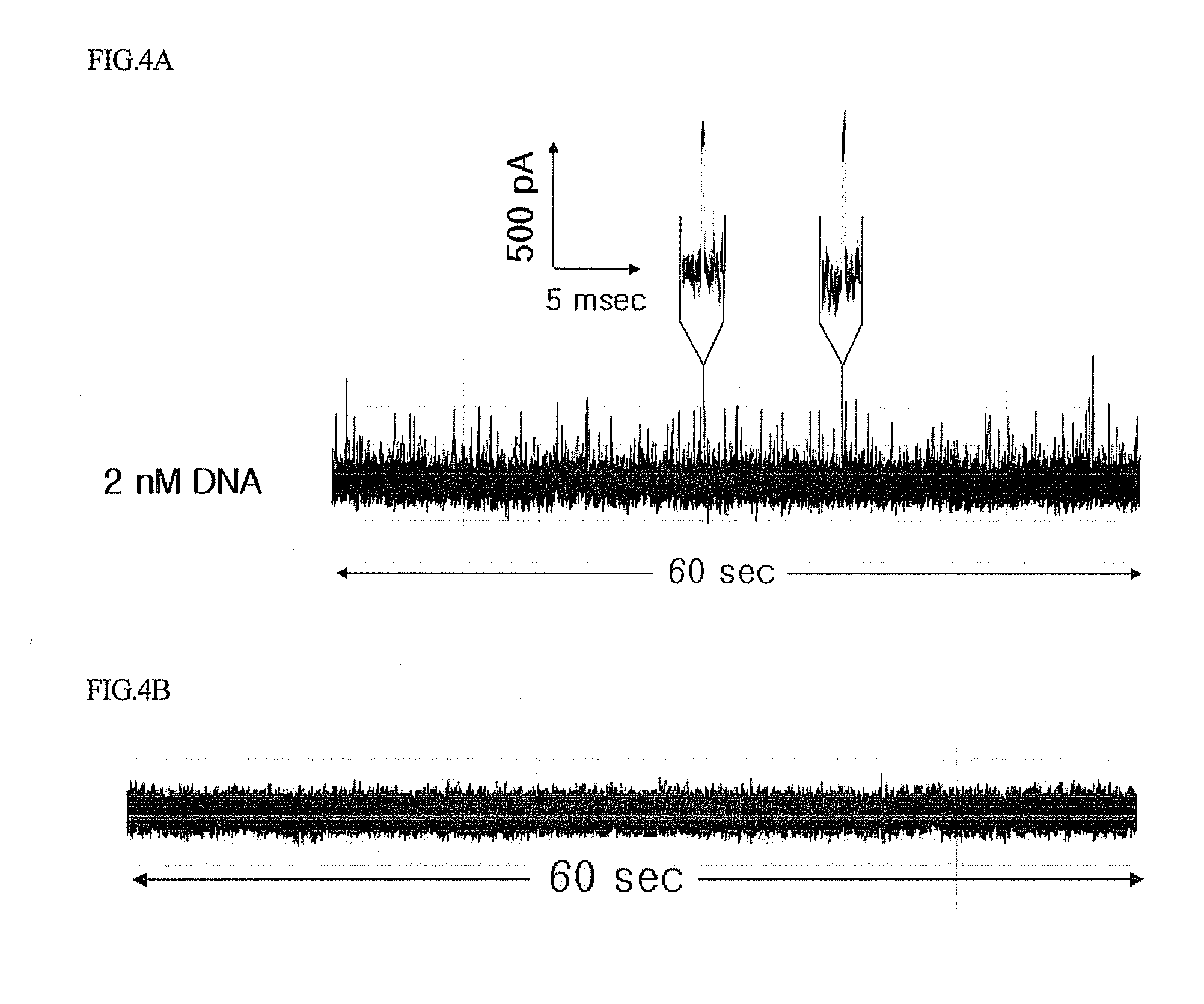Method and device for detecting DNA using surface-treated nanopore
a nanopore and surface-treated technology, applied in the field of methods and devices for detecting nucleic acids using nanopores, can solve the problems of difficult detection of dna less than 2000 base pairs (bps), high difficulty, and high passage rate of dna through the nanopor
- Summary
- Abstract
- Description
- Claims
- Application Information
AI Technical Summary
Benefits of technology
Problems solved by technology
Method used
Image
Examples
example 1
[0047] 1. Formation of Solid Substrate having 30 nm Diameter Nanopore
[0048] A 250 nm silicon nitride was deposited on silicon substrate using low pressure chemical-vapor deposition (“LPCVD”). A thin free standing membrane of silicon nitride having a size of 30μm× 30 μm (Length×Width) was fabricated by opening a window in the unpolished side of the substrate using photo lithography, followed by reactive ion etching and KOH wet etching to remove the silicon. Then, a 100 nm diameter pore was formed in the central portion of the membrane using a FIB machine (focused ion beam machine) SMI2050 (manufactured by Seiko instrument Inc.). and a thin layer made of aluminum oxide (Al203) was deposited into the pore using atomic layer deposition so that the diameter of the pore was reduced to a size of 30 nm. The thickness of the deposited A12O3 layer was measured with an ellipsometer. As a result, a cylindrical nanopore having a diameter of 30 nm was formed through the 320 nm thick membrane.
[0...
example 2
Example 2 was performed in the same manner as in Example 1, except that the double-stranded DNA loaded into the inventive device had a size of 910 bps. The measurement results are shown in FIG. 4A.
PUM
| Property | Measurement | Unit |
|---|---|---|
| size | aaaaa | aaaaa |
| diameter | aaaaa | aaaaa |
| diameter | aaaaa | aaaaa |
Abstract
Description
Claims
Application Information
 Login to View More
Login to View More - R&D
- Intellectual Property
- Life Sciences
- Materials
- Tech Scout
- Unparalleled Data Quality
- Higher Quality Content
- 60% Fewer Hallucinations
Browse by: Latest US Patents, China's latest patents, Technical Efficacy Thesaurus, Application Domain, Technology Topic, Popular Technical Reports.
© 2025 PatSnap. All rights reserved.Legal|Privacy policy|Modern Slavery Act Transparency Statement|Sitemap|About US| Contact US: help@patsnap.com



